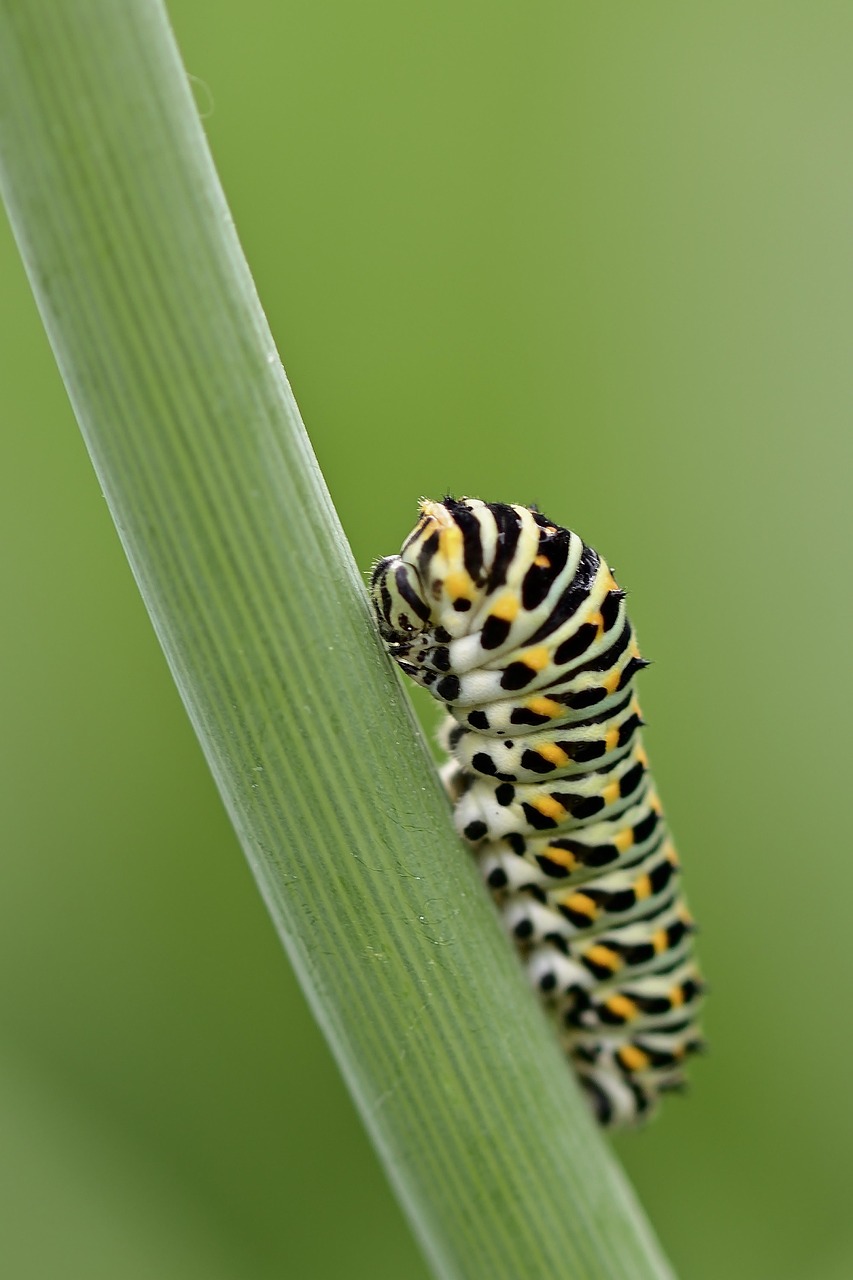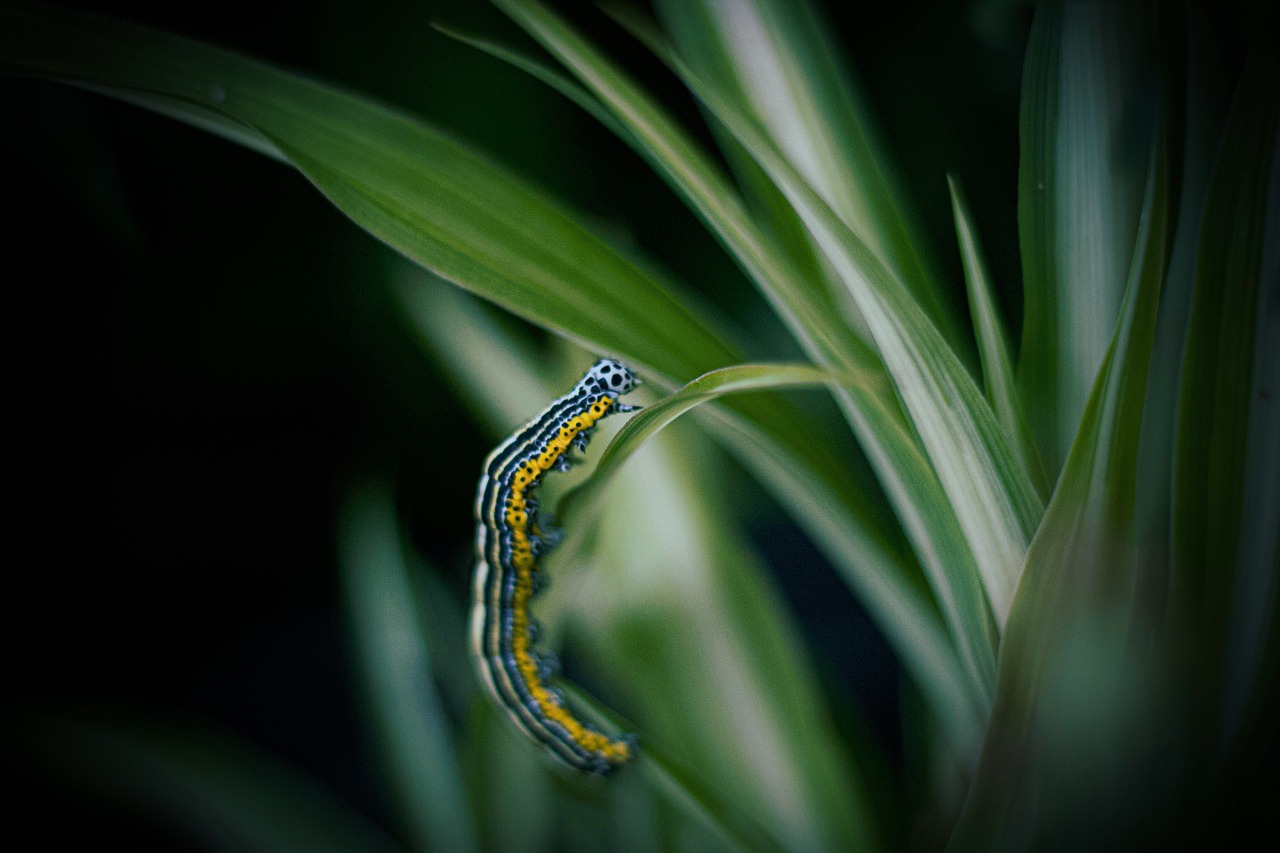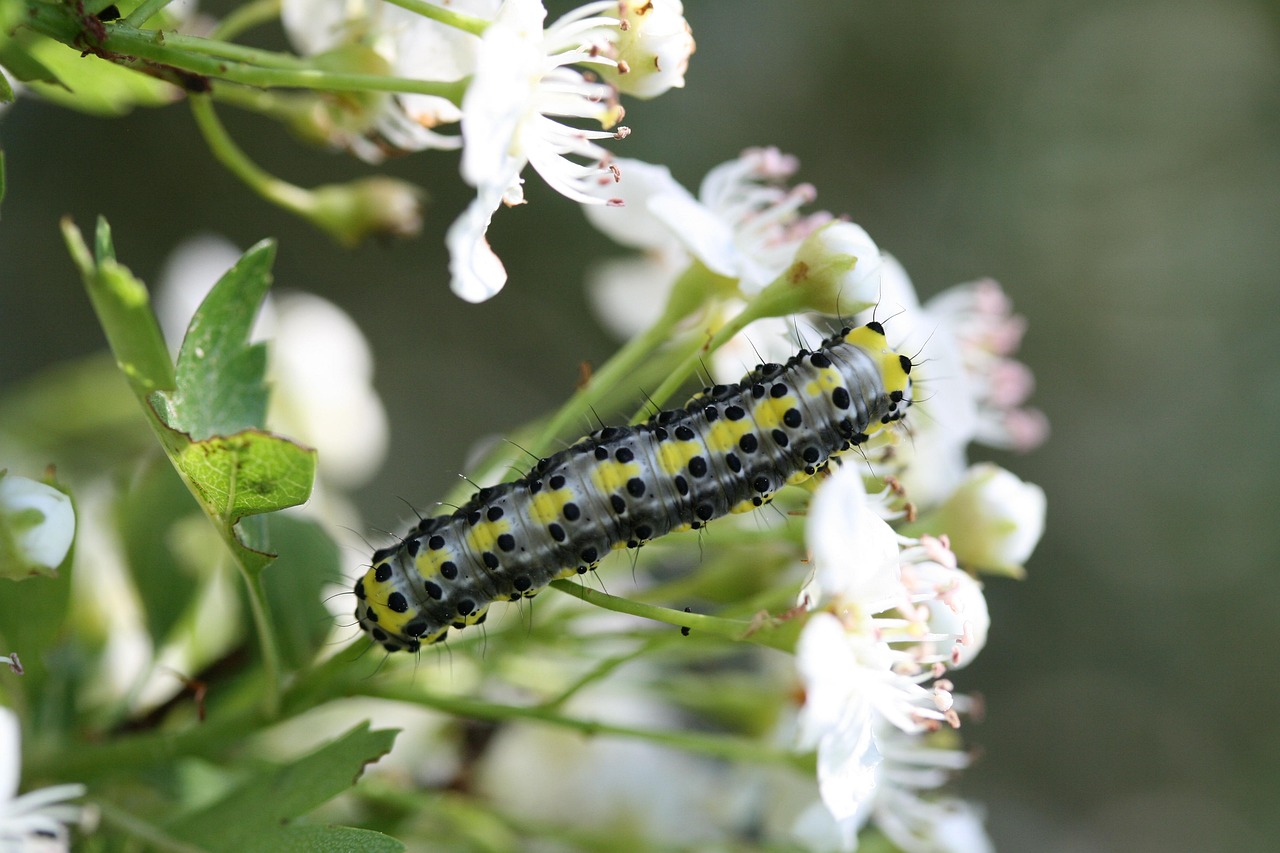Butterfly caterpillars are fascinating creatures that undergo a remarkable transformation, known as metamorphosis. This process transforms them from small, munching larvae into beautiful butterflies. Understanding this journey provides insight into the wonders of nature.
Caterpillars are the larval stage of butterflies and moths. They belong to the order Lepidoptera, which is characterized by their scaly wings as adults. Caterpillars are primarily herbivores and have a unique role in the ecosystem as they help in the pollination process once they mature into butterflies. The life cycle of a butterfly is divided into four main stages: egg, larva (caterpillar), pupa (chrysalis), and adult butterfly.

The Life Cycle of a Butterfly
The life cycle of a butterfly is one of nature’s most fascinating phenomena. It typically begins with the female butterfly laying eggs on specific host plants. Each stage of development plays a crucial role in the butterfly’s overall life history.
- Egg Stage: The first stage begins when a female butterfly lays eggs. These eggs are often small and can vary in color, shape, and texture depending on the species.
- Caterpillar Stage: After a few days, the eggs hatch into caterpillars, which are primarily focused on eating and growing.
- Pupa Stage: Once they reach a certain size, caterpillars will find a safe place to form a chrysalis. During this time, they undergo significant changes.
- Adult Butterfly Stage: Finally, the mature butterfly emerges from the chrysalis, ready to continue the cycle.
The caterpillar stage can last from a few weeks to several months, depending on the species and environmental conditions. During this time, caterpillars grow rapidly and may molt several times. This process is necessary for their growth as their exoskeleton cannot expand. As they grow, they also accumulate energy reserves for their next stage of life.
Caterpillar Characteristics
Caterpillars exhibit various characteristics that make them unique and interesting. Some of these include:
- Appearance: Caterpillars come in diverse shapes, sizes, and colors. Some are brightly colored to warn predators of their toxicity, while others use camouflage to blend in with their surroundings.
- Behavior: Many caterpillars are voracious eaters. They consume large quantities of leaves to store energy for metamorphosis.
- Defense Mechanisms: To protect themselves from predators, some caterpillars have developed unique adaptations, such as spines, mimicking twigs or leaves, or even producing toxic chemicals.
Understanding these characteristics helps us appreciate the adaptations that caterpillars have developed to survive in their environments. Observing caterpillars in their natural habitat can be an enlightening experience, especially when considering how their lives will eventually transform into that of butterflies.
The Process of Metamorphosis

Metamorphosis is a complex biological process that enables caterpillars to transform into butterflies. It involves several key stages:
- Ecdysis: This is the molting process where the caterpillar sheds its skin to grow larger.
- Chrysalis Formation: Once fully grown, the caterpillar attaches itself to a secure surface and forms a protective casing around itself.
- Tissue Reorganization: Inside the chrysalis, the caterpillar’s body undergoes dramatic changes, reorganizing its cells and forming new structures.
- Emergence: After several weeks, the fully formed butterfly emerges from the chrysalis and expands its wings.
This incredible transformation is not just physical; it signifies a complete reorganization of the caterpillar’s body structure. The study of this process reveals much about growth, development, and evolution in insects.
Caterpillar Diet and Feeding Habits

Caterpillars are primarily herbivorous, and their diet plays a crucial role in their growth and development. They consume a variety of plant materials, which provide the necessary nutrients to support their rapid growth during the larval stage.
The types of plants that caterpillars feed on can vary significantly depending on the species. Some caterpillars are specialized feeders, meaning they only eat specific types of plants. Others are more generalist feeders and will consume a broader range of vegetation. Understanding the dietary preferences of caterpillars is essential for their conservation and study.
Common Food Sources
Here are some common food sources for caterpillars:
- Leaves: Most caterpillars prefer tender leaves, which are easy to digest. Common host plants include oak, milkweed, and various herbs.
- Flowers: Some caterpillars will also feed on flower petals and nectar. This behavior aids in pollination.
- Fruits: A few species may consume fallen fruits, providing additional nutrients.
Many caterpillars have developed unique adaptations that allow them to maximize their feeding efficiency. For instance, some possess strong mandibles that enable them to chew tough plant material, while others may have evolved to detoxify harmful compounds found in certain plants.
Caterpillar Behavior and Habitat
Caterpillar behavior is equally fascinating. Their activities are primarily driven by the need to find food and avoid predators. Understanding these behaviors can provide insights into their survival strategies.
Behavioral Adaptations
Caterpillars exhibit several behavioral adaptations to enhance their survival:
- Camouflage: Many caterpillars have evolved colors and patterns that allow them to blend into their surroundings effectively. This helps them evade detection by predators.
- Resting Positions: Some caterpillars adopt specific resting positions that mimic twigs or leaves, further aiding in camouflage.
- Feeding Patterns: Caterpillars often feed at night to avoid daytime predators, such as birds.
Preferred Habitats
Caterpillars can be found in various habitats, depending on the species. Common habitats include:
- Forests: Dense foliage provides ample food and shelter.
- Gardens: Cultivated areas often attract various species due to the abundance of host plants.
- Meadows: Open areas with wildflowers offer diverse feeding options for caterpillars.
The selection of habitat is crucial for caterpillar survival. It affects not only their access to food but also their ability to avoid predators and environmental hazards.
The Importance of Caterpillars in Ecosystems
Caterpillars play a significant role in their ecosystems. They serve as a vital food source for many animals, including birds, mammals, and other insects. This makes them an essential component of the food web.
Additionally, as caterpillars feed on plants, they contribute to plant growth and reproduction. Their feeding helps prune plants, promoting healthier growth patterns. Furthermore, when they eventually transform into butterflies, they become important pollinators, aiding in the reproduction of many flowering plants.
The ecological impact of caterpillars extends beyond their immediate environment. They help maintain biodiversity and contribute to the overall health of ecosystems. Understanding their role is crucial for conservation efforts aimed at preserving butterfly populations and their habitats.

Threats to Caterpillar Populations
Despite their important role in ecosystems, caterpillar populations face numerous threats. These threats can significantly impact their survival and, consequently, the health of the ecosystems they inhabit.
Habitat Loss
One of the most pressing threats to caterpillar populations is habitat loss. As urbanization and agricultural expansion continue, many natural habitats are being destroyed or altered. This can lead to:
- Loss of Host Plants: Caterpillars depend on specific plants for food. When these plants are removed, caterpillars may struggle to find adequate nutrition.
- Fragmentation: Habitat fragmentation can isolate caterpillar populations, making it difficult for them to breed and thrive.
- Pollution: Pesticides and other pollutants can contaminate the food sources of caterpillars, leading to toxicity and decline in populations.
Climate Change
Climate change poses another significant threat to caterpillar survival. Changes in temperature and precipitation patterns can affect their life cycles and habitat availability. Some impacts include:
- Timing Mismatches: If the emergence of caterpillars does not coincide with the availability of food plants due to changes in climate, it can lead to starvation.
- Increased Predation: Climate change can alter predator-prey dynamics, potentially increasing predation rates on caterpillars.
- Extreme Weather Events: Severe weather conditions, such as droughts or floods, can destroy habitats and impact caterpillar populations.
Conservation Efforts for Caterpillars
Efforts to conserve caterpillar populations are essential for maintaining biodiversity and ecosystem health. Several strategies can be employed to protect these vital insects.
Habitat Restoration
Restoring natural habitats is one of the most effective ways to support caterpillar populations. This can involve:
- Replanting Native Flora: Planting native host plants ensures that caterpillars have the food sources they need to thrive.
- Creating Wildlife Corridors: Establishing connections between fragmented habitats allows for movement and genetic exchange among caterpillar populations.
- Reducing Invasive Species: Managing invasive plant species that compete with native flora can help restore balance in ecosystems.
Public Awareness and Education
Increasing public awareness about the importance of caterpillars and their role in ecosystems is critical. Educational initiatives can include:
- Community Outreach: Engaging local communities through workshops and informational sessions about butterfly conservation.
- School Programs: Introducing educational programs in schools that highlight the metamorphosis process and ecological significance of caterpillars.
- Citizen Science Projects: Encouraging individuals to participate in monitoring and documenting local caterpillar populations can foster interest in conservation.
The Role of Butterfly Gardens
Creating butterfly gardens is an effective way to support both caterpillars and adult butterflies. These gardens provide essential resources such as food, shelter, and breeding sites.
Designing a Butterfly Garden
A butterfly garden should include a variety of plants that serve both as nectar sources for adult butterflies and host plants for caterpillars. Important considerations include:
- Diversity of Plants: Incorporating a mix of flowering plants and host plants for various caterpillar species enhances biodiversity.
- Nectar Sources: Selecting nectar-rich flowers ensures that adult butterflies have sufficient food.
- Sunlight Exposure: Placing the garden in a sunny area will attract more butterflies, as they prefer warm environments.
By fostering environments that support both stages of the butterfly life cycle, individuals can contribute to the conservation of these enchanting creatures while enjoying the beauty they bring to gardens and landscapes.
Encouraging Community Involvement
In addition to creating individual butterfly gardens, community involvement plays a significant role in supporting caterpillar and butterfly populations. Collaborative efforts can amplify the impact of conservation initiatives and create environments that benefit local ecosystems.
Community Initiatives
Here are some ways communities can come together to promote butterfly conservation:
- Community Garden Projects: Establishing community gardens that focus on native flora can serve as habitats for caterpillars and butterflies while also enhancing community spirit.
- Local Workshops: Hosting workshops on butterfly gardening, caterpillar identification, and ecological balance can raise awareness and encourage participation.
- Pollinator Pathways: Creating designated pathways of flowering plants connecting various green spaces can help facilitate the movement of butterflies and caterpillars across urban areas.
These initiatives not only support wildlife but also foster a sense of community and shared responsibility for the environment. Engaging people of all ages in these activities can cultivate a deeper appreciation for nature and its intricate relationships.
The Science Behind Metamorphosis
Understanding the science behind the metamorphosis of caterpillars into butterflies is essential for appreciating this phenomenon. Researchers continue to study the biochemical processes involved in this transformation, which include:
- Gene Expression: The activation and deactivation of specific genes during metamorphosis are crucial for the development of the butterfly’s structures.
- Hormonal Changes: Hormones such as eclosion hormone and juvenile hormone regulate the progression from one life stage to another.
- Cellular Reorganization: During the pupal stage, caterpillar tissues break down and reorganize to form the adult butterfly’s features, including wings and reproductive organs.
This area of research sheds light on fundamental biological processes and has implications for understanding development and evolution across various species.
Supporting Biodiversity Through Conservation
Caterpillars and butterflies are vital indicators of environmental health. Their presence signifies a balanced ecosystem, while declines in their populations can serve as warning signs for larger ecological issues. Supporting biodiversity through conservation efforts is essential for maintaining healthy ecosystems.
Conservation strategies should focus not only on caterpillars and butterflies but also on preserving their entire habitat, which includes a variety of plants, insects, and microorganisms. By protecting these interconnected systems, we ensure that future generations can witness the magical transformation of caterpillars into butterflies.
Final Thoughts
The journey of butterfly caterpillars is a remarkable testament to nature’s ability to transform. From their initial stages as voracious eaters to their ultimate emergence as delicate butterflies, they embody the essence of change and adaptability. Understanding their life cycle, behaviors, and ecological significance enriches our appreciation for these creatures.
As individuals and communities, we have the power to contribute to the conservation of caterpillar and butterfly populations through gardening, education, and habitat restoration. By fostering environments that support their growth and survival, we not only protect these enchanting insects but also enhance our natural landscapes. Together, we can ensure that future generations will continue to witness this magical transformation and enjoy the beauty that butterflies bring to our world.
